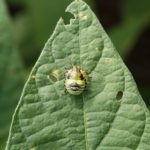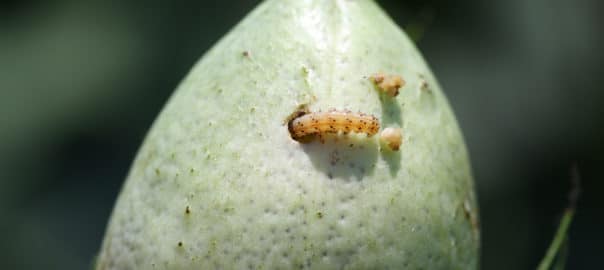It is uncertain how big our moth flight will be this year. As usual, bollworm moth catches have been generally low to this point. However, you can expect activity to slowly increase, with a peak in moth activity occurring the last week of July and the first week of August. With the decreasing efficacy of pyrethroid insecticides and increasing tolerance to some Bt toxins, you should plan on using Continue reading
Recent Updates
Cotton – Crunch Time for Plant Bugs and Stink Bugs
Now through the end of July is the critical time to manage infestations of plant bugs and stink bugs. Of course it varies considerably, but we are seeing more consistent infestations of plant bugs. Stink bugs have made a come back after very low populations last year. Clouded plant bugs are also a bigger part of the mix this year in some areas. I prefer the drop cloth during this time frame, using a threshold of 3 tarnished plant bugs on a drop cloth as the treatment threshold. As a rule of thumb, Continue reading
Soybean Insect Update

Having done several scout schools this past week and spending some time on the phone, there doesn’t appear to be any major insect pest problems in soybean at this time. However, it is also clear that stink bug populations have rebounded from last year. Some early maturing fields are above the suggested treatment threshold of 9 stink bugs per 25 sweeps. Most are green stink bugs, and Continue reading
Tennessee Weekly Crop & Weather Report
WEEK BRINGS HAY HARVEST CHALLENGES;
CROPS IN GOOD CONDITION
Wet conditions in several areas of the state prevented growers from harvesting hay that had already been cut or cutting hay that was past due being cut. Soybean planting is nearly complete, corn is tasseling in some areas, cotton is setting bolls, and herbicides and fungicides were being applied. Overall, Tennessee’s field crops look good. There were 4.8 days suitable for field work. Topsoil was 11 percent short, 78 percent adequate, and 11
percent surplus. Subsoil moisture was 12 percent short, 81 percent adequate, and 7 percent surplus. Continue reading at TN_07_09_18. The U.S. Crop Progress report can be read at CropProg-07-09-2018.
Tennessee Market Highlights
A volatile week ended with corn, soybeans, cotton, and wheat up substantially on Friday to secure gains week-over-week across the board. December corn was up 8 ½ cents, November soybeans were up 38 ¾ cents, December cotton was up 2.49 cents, and September wheat was up 9 ¾ cents on Friday. Next week will be critical to determine if a bottom has been established for corn, soybeans, wheat, and cotton. Markets will continue to focus on weather and trade. Continue reading at Tennessee Market Highlights.
UT Commodity Market Update 7/6/2018
Corn: September corn futures have rallied this holiday week in part due to the strength gained from the soybean market. However, that says very little given the decline that we have experienced in the corn markets since we put the crop in the ground. The below chart shows just how much corn futures have fallen since spring planting. Continue reading
Tennessee Dicamba Injury Update & Identification
An update on reports of dicamba injury in Tennessee, plus how to distinguish dicamba injury from injury caused by Group 15 herbicides.
Agriculture Risk Coverage (ARC) and Price Loss Coverage (PLC) Educational Tool Available for Farms with Generic Base Acres that Planted Seed Cotton
USDA is an equal opportunity provider, employer and lender. To file a complaint of discrimination, write: USDA, Office of the Assistant Secretary for Civil Rights, Office of Adjudication, 1400 Independence Ave., SW, Washington, DC 20250-9410 or call (866) 632-9992 (Toll-free Customer Service), (800) 877-8339 (Local or Federal relay), (866) 377-8642 (Relay voice users).


